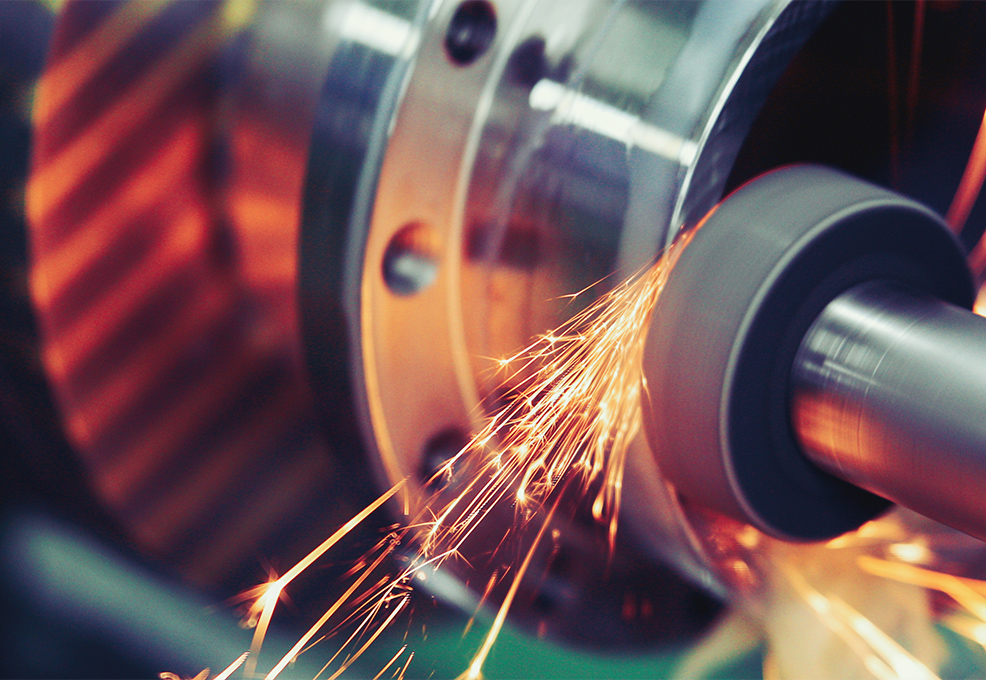ViSSA 2.0: Virtually Shared Spectrum Access (ViSSA) Experiment and Demonstration Platform 2.0
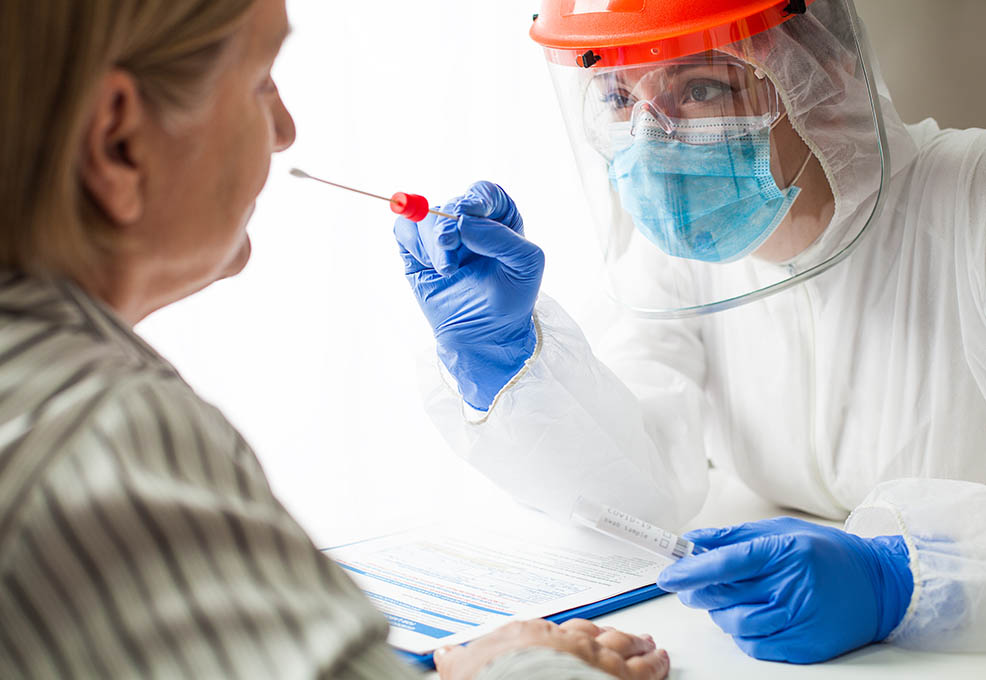
Author(s)
Jiunn-Der LiaoBiography
Prof. Dr. Jiunn-Der Liao is currently a Distinguished Professor of the Department of Materials Science and Engineering, NCKU. He just completed his appointment as Counselor and Director for Science and Technology, Taipei Representative Office in the EU and Belgium (2015/7~2019/7). His major research interests focus on SERS applications and Plasma Medicine.
Academy/University/Organization
National Cheng Kung University-
TAGS
-
Share this article
You are free to share this article under the Attribution 4.0 International license
- ENGINEERING & TECHNOLOGIES
- Text & Image
- January 14,2021
Epidemic spread and infection through viruses are always important issues in clinical medicine. Global large-scale infections caused by virus outbreaks have been multiplying. Since January 2020, the COVID-19 (SARS-CoV-2) epidemic has ravaged the world, and many countries have therefore focused on developing fast screening technology as well as effective vaccines. In view of this development, Prof. Jiunn-Der Liao from the Department of Materials Science and Engineering at National Cheng Kung University (NCKU) is leading his team, from the viewpoint of engineered applications, to combine nano- and micron-scale manufacturing technologies with spectroscopy information to design an innovative method, a non-nucleic acid or antibody screening method, and to detect viruses through their envelopes. Even with minimal virus samples and simple pre-processing, rapid and qualitative detection of the COVID-19 virus can possibly be achieved, with the aim of providing an important reference for rapid screening and preliminary diagnosis.
Common viruses are about 30 to 250 nm in size and dimension, and the COVID-19 virus is about 100 nm. Prof. Liao proved the concept of “fighting (by finding) nano with nano” and applied it in his research to create nanoscale traps to capture viral particles. For example, his team developed substrates with multiple nanoscale funnel-shaped cavities, which could trap viral particles and detect a viral presence even if there are only particles (Figures 1 and 2). For viruses or virus strains that fall into the nanostructure, the biochemical structure of the outer envelope of the virus can be measured to identify the existence of the virus, and after repeated testing, the virus can be diagnosed. The substrates developed by Professor Liao's team have been experimented on with viruses, including H1N1, SARS, Influenza, etc. Further study is anticipated to identify viruses that are alive, dead or even variated.
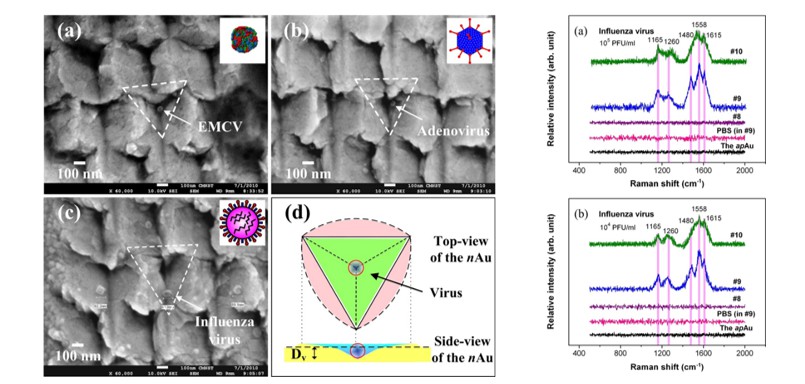
Figures 1 (left) and 2 (right):Our previous studies on the appearance and size of three kinds of viruses fell into nanocavities, shown by SEM images (Figure 1(a)-(c)) and an illustration (Figure 1(d). By choosing a special wavelength laser and interacting with the virus envelope, a specifically enhanced Raman spectral signal is generated. After comparing with the database, the availability and the kind of virus can be analyzed.
So far, the recognized and accurate methods for COVID-19 virus detection are: (1) Reverse transcription quantitative polymerase chain reaction (RT-PCR) using nucleic acid fragments, which requires sample pretreatment and preparation processes. Prior to actual detection, specific primers target the RNA fragments in the virus; the entire process takes several hours. (2) If antibodies have formed in the blood, the antibody test takes effect after a few days; it is thus unsuitable for early detection of active infections. Therefore, method (1) is still the choice for fast-screening, despite the time-consuming process. Surface-enhanced Raman spectroscopy (SERS) technology is a method for rapid screening of non-nucleic acid viruses. It has been initially proven to be an effective virus detection platform which can detect trace analytes, from residual small to large molecules, even viruses and bacteria, and is especially suitable for early asymptomatic periods (Figure 3). This method requires only a small amount of sample preparation and does not require labeling or the use of expensive reagents and chemicals for subsequent detection, i.e., the target object to be measured is introduced onto the SERS-active substrate surface, and under the laser irradiation of a specific wavelength, the induced molecular vibration is changed. Then, the Raman scattering spectrum with characteristic peaks is generated. Based on Professor Liao’s previous studies, it is speculated that the outer envelope of the COVID-19 virus consists of pike glycoproteins and a specific envelope protein, and these biochemical structures are very important for the current research; the latter is the main contributor to its SERS spectrum.
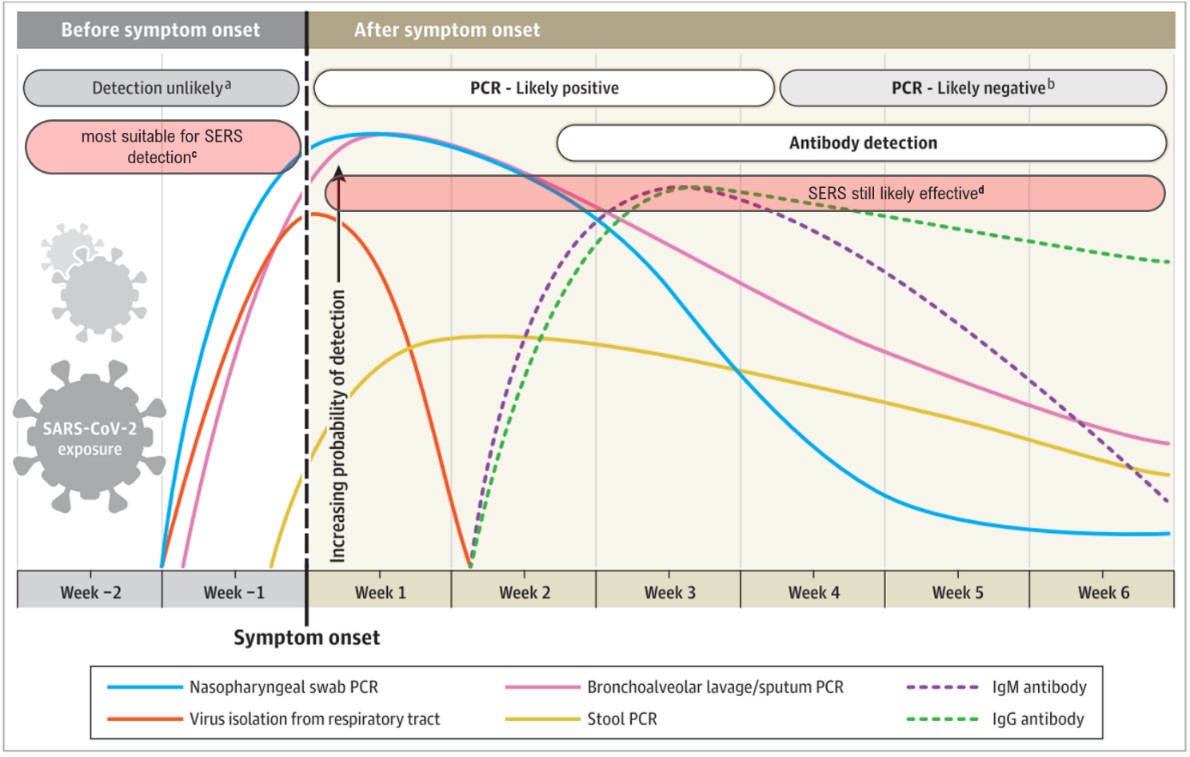
Figure 3: Estimated time intervals and rates of viral detection are based on data from several published reports. a Detection only occurs if patients are followed up proactively from the time of exposure. b It is more likely to register a negative than a positive result by PCR of a nasopharyngeal swab. (Cited from JAMA, Volume 323, No. 22, 2249, June 9, 2020) c Our technique is most suitable for the timing interval before the onset of symptoms because the amount of virus is small and the current standard method is difficult to detect. d It is also suitable for use after the onset of symptoms; the amount of virus increases and the current standard method can be applied.
The highlight of this research lies in using engineering technology to quickly screen the COVID-19 virus or its variations by analyzing the special protein structure of the virus envelope. The period of qualitative discrimination is expected to be completed within one minute; after the establishment of a special spectral database, the high discrimination rate of the virus diagnosis can be achieved. Striving for the maximum benefit at the application level, the ultimate goal of Professor Liao's team is anticipated to design and build-up a mobile fast screening station (Figure 4) that can be delivered to the destination, while urgently building fast screening facilities and providing services when needed. Therefore, it is necessary to modularize the mobile fast screening station.
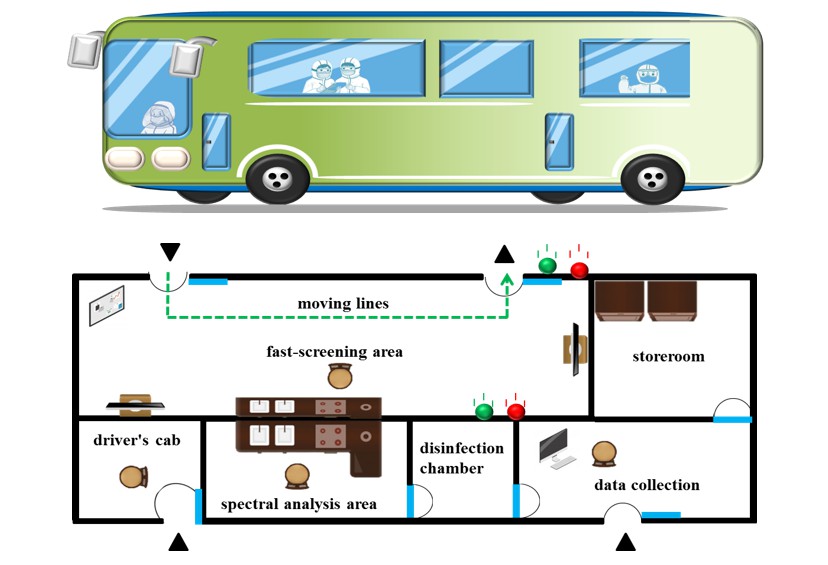
Figure 4:(a) Mobile Screening Station (b) By integrating with a fast-screening area, spectral analysis area, and moving lines, a Mobile Screening Station is illustrated. (Shown in the US Provisional Patent: 63/048,213)
With the global spread of the COVID-19 virus epidemic, countries around the world are worried about the threat coming in from abroad. If fast screening modules or a mobile fast screening station can be built near an international airport or port, large-scale event venue, etc., it may reduce the risk of contact between people and increase mutual trust. In response to these challenges, in the past three months, we have received assistance from the College of Medicine and Hospital of NCKU. Some companies have already expressed their willingness to further cooperate, and are moving towards the direction of early investment, trial mass production and patent sharing. This technology is also undergoing consultation and guidance on the COVID-19 project from the Pharmaceutical Inspection Center. In addition, experts from the European Union and the United Kingdom have sent letters to discuss the characteristics of this technology with agreement and strong support for this research. There is also a manufacturer in Hanoi, Vietnam, who intends to apply for grants from the government to introduce this technology or the developed product into the country. On the whole, although this technology still needs time and grants to develop, it will have long-term strategic benefits for fast screening of COVID-19 or other emerging viruses in the future to maintain national health and economic activities.
STAY CONNECTED. SUBSCRIBE TO OUR NEWSLETTER.
Add your information below to receive daily updates.




